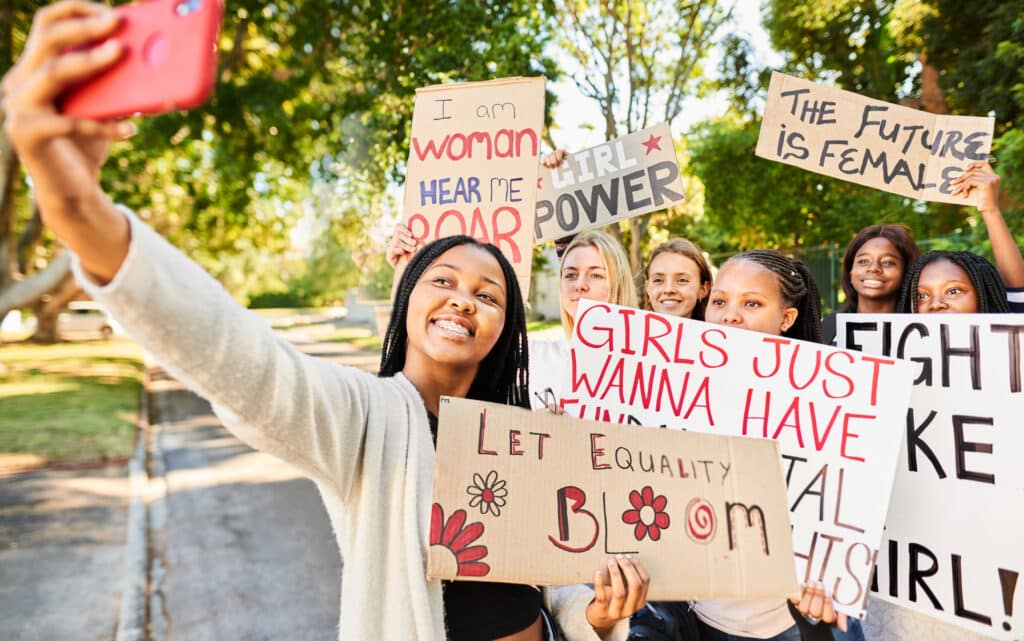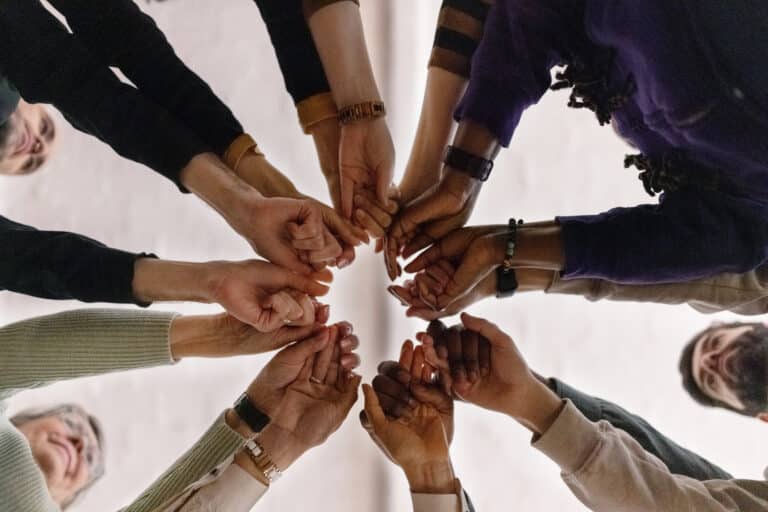This year, International Women’s Day focuses on ‘inspiring inclusion’. What does this mean for business? A good place to start would be the 2023 Women in the Workplace report, jointly authored by McKinsey and equality campaigners Lean In. Together they found that despite gains at the top, women still remain under-represented in business at all levels.
The Women in the Workplace report (October 2023) is the largest annual study on the state of women in corporate America. A survey of more than 27,000 employees at 276 organisations, the study found that while there have been sizeable gains in senior leadership, there’s been less progress in middle management, along with “persistent underrepresentation of women of colour.” This International Women’s Day, the report will serve as a key focus point for business leaders.
When is International Women’s Day?
Celebrated annually on March 8, International Women’s Day (IWD) aims to raise awareness of discrimination, and continue progress towards gender parity.
Landmark IWD moments include marches in 1914 when women across Europe held rallies to campaign against the First World War. Three years later, thousands of women in Russia demanded bread and peace in actions that contributed to the abdication of the czar.
More recently, in 2022 Jamaica staged an all-female sitting of parliament for young women, and in January this year Somalia launched its first current affairs TV show led by women. IWD is now a public holiday in countries including Nepal, Burkina Faso, Sierra Leone, Cambodia and Kyrgyzstan.
What is International Women’s Day?
The biggest employee engagement day of the year, International Women’s Day allows campaigners to reflect on progress made, acknowledge challenges that still exist, and continue the process of dismantling stereotypes – including in the workplace.
According to the Women in the Workplace report, inequalities in business are perpetuated by outdated thinking. In particular, four persistent myths continue to hold women back:
Myth 1: Women are becoming less ambitious
Reality: Women are as committed to their careers and as interested in being promoted as men at every stage of the pipeline. New flexibilities introduced since the pandemic have led to women becoming more ambitious than ever.
Myth 2: The biggest barrier to women’s advancement is the ‘glass ceiling’
Reality: The ‘broken rung’ is the greatest obstacle women face on the path to senior leadership. Women’s biggest hurdle to advancement is at the first critical step up to manager: for every 100 men promoted from entry-level to manager, 87 women are promoted.
Myth 3: Microaggressions have a ‘micro’ impact
Reality: Microaggressions have a large and lasting impact on women. The report echoed findings from previous years showing that women experience microaggressions at a significantly higher rate than men. Women are twice as likely to hear comments on their emotional state.
Myth 4: It’s mostly women who want – and benefit from – flexible work
Reality: Workplace flexibility is no longer just an added bonus for some employees; it’s important to nearly everyone. Men and women see flexibility as a ‘top 3’ employee benefit and critical to their organisation’s success.
What are the biggest indicators of inequality?
In 2015, after two years of negotiations, governments around the world signed up to the UN’s programme of 17 sustainable development goals (SDGs) – intended to be implemented by 2030. These include better gender equality and reduced inequalities, with a focus on the empowerment of all women and girls.
Progress in each of the 17 objectives is assessed each year, for example SDG 5 – gender equality – is evaluated through 18 indicators. Of these, only one is close to target: the proportion of seats held by women in local government.
Other indicators are less encouraging. According to the Gender Snapshot 2023, published by the UN’s gender equality agency, if current trends continue more than 340 million women and girls will still be living in extreme poverty by 2030. That’s 8% of the female population worldwide. And close to one in four will experience food insecurity. The report found that women will face an alarming $360 billion annual deficit in gender-equality measures by 2030.
Tackling workplace inequality
How should leaders respond to these calls for action? In business, there’s a need to recognise the Gender Snapshot’s concern that “women’s share of workplace management positions will remain below parity even by 2050.”
In recent years, there has been progress in business, including a growing emphasis on empowering women in STEM (science, technology, engineering, and mathematics) fields. STEM initiatives promoting education and mentorship for young girls have helped to break down barriers and foster inclusivity, leading to more women pursuing careers in traditionally male-dominated industries.
Nevertheless, women worldwide continue to face wage gaps, limited access to financial resources, and barriers to entrepreneurship. Evidence for this comes, in part, from the work of Claudia Goldin, who in October 2023 became the first woman to win solo the Nobel Prize for Economics in recognition of her ground-breaking research examining the history of the pay gap.
Campaign organisers at IWD list ways that this year’s theme can be developed in business, including:
- forging women’s economic empowerment
- recruiting, retaining and developing female talent
- supporting women and girls into leadership, decision-making, business and STEM
- providing women and girls with access to quality education and training
- promoting creative and artistic talent of women and girls
Supporting International Women’s Day campaigns
At Working Voices, we support IWD themes through courses such as Women’s Leadership: Becoming a Leader and Women’s Leadership: The Executive.
In addition, our in-depth work on disengagement in the workplace identified key causes of fatigue and poor productivity. In response, we developed The Sustainable Human training programme that specifically tackles these causes. Focusing on sustainable ways of working, The Sustainable Human strategy embodies a clear commitment to gender equality.
Our research was inspired by key papers from psychologists, behavioural scientists, and businesses, including work on collective intelligence published in 2010 by organisational behaviour expert Anita Woolley, and others. Its findings include the realisation that the more women on a team, the higher the team’s collective intelligence. This is because women are more likely to show ‘social sensitivity’ in supporting others, for example encouraging quieter but no less talented team-members to share their ideas which in turn supports the team’s performance.
Embodying values at the heart of International Women’s Day, The Sustainable Human supports the call from IWD campaigners to “forge inclusive work cultures where women’s careers thrive and their achievements are celebrated.”
Inspiring inclusion in the workplace makes for a healthier, more productive organisation – which is important to everyone, regardless of gender. Ultimately, IWD is a powerful reminder that gender equality is not just a women’s issue, it’s a fundamental human rights issue that requires collective action from all.





